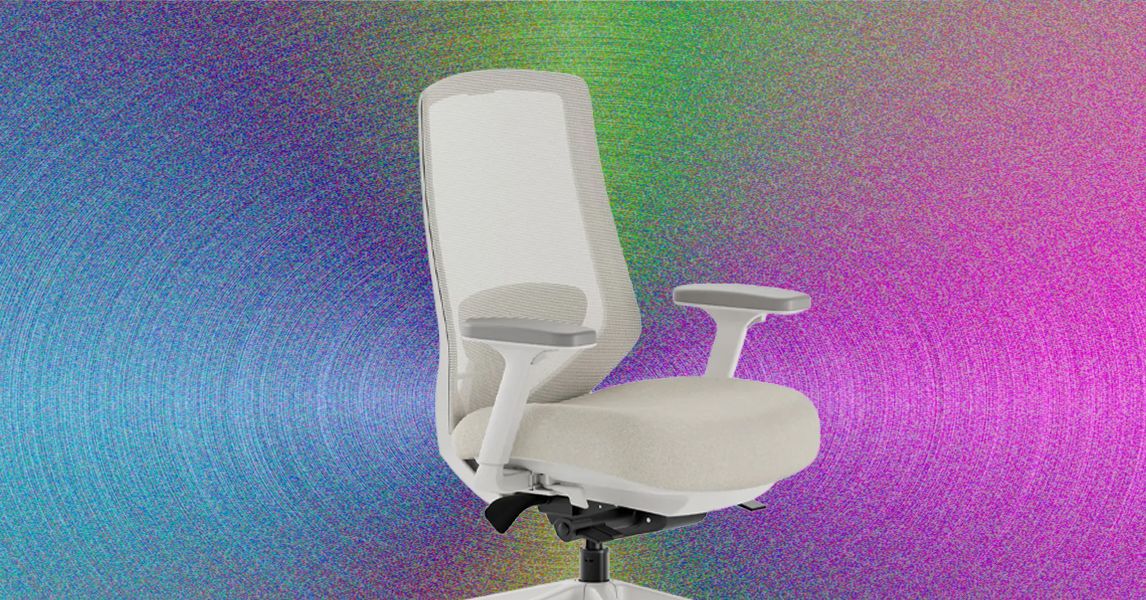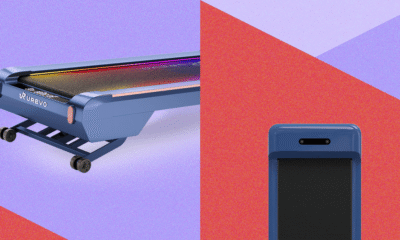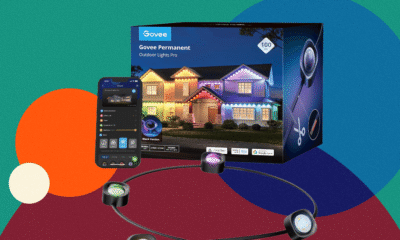Tech
Lumbar Support Can Make a Huge Difference in Your Office Chair

I also spoke to John Gallucci, a licensed physical therapist and athletic trainer who specializes in treating symptoms from poor office posture, and he confirmed much of what Egbert said. Closed case, right? Well, it’s certainly not just marketing speak so that office chair manufacturers can charge you extra. But there are some important factors to consider.
Not All Lumbar Support Is Equal
Gallucci was quick to point out the benefits of lumbar support, but he also issued some warnings about how to proceed. Turns out, not all lumbar support is equal. “The most important thing to look for in a chair is ergonomic adjustability,” he says, referencing the need for adjustable lumbar support. “A good chair should support your posture for long periods without causing discomfort or fatigue. That means it should allow you to adjust the seat height, seat pan depth, armrests, lumbar support, and backrest tilt.”
Chairs with fixed lumbar support mean it isn’t adjustable to your body. Lumbar support and adjustments come in different forms these days. For example, some chairs have lumbar height adjustment but not depth, also known as “two-way” adjustment. Some use a dial for adjustment, and others use a ratchet or lever system. Other chairs let you adjust the entire backrest to find the right position, and some cheaper chairs resort to just a simple pad that can be manually moved. These can, in theory, all be good solutions, so long as you’re able to find the right position.
“That curve has to be adjustable as to where it is,” Egbert says. “My butt might be lower than your butt, and you want it to match where that curve in your lower back is. You want to be able to slide it up and down.”
A good example of an ergonomic chair with “two-way” lumbar adjustment is the Branch Ergonomic Chair Pro. We’ve tested dozens of chairs, and this excellent lumbar support is one of the reasons WIRED’s office chair reviewer, Julian Chokkattu, found it so comfortable. It also doesn’t cost over a thousand dollars like so many high-end office chairs.
If you aren’t ready to shell out $500 on an ergonomic chair, that doesn’t mean you have to be doomed to lower back pain. Some DIY solutions can even be better than a chair with inadequate lumbar adjustment. We’ve even tested some add-on lumbar cushions that we like, such as this LoveHome model you can find on Amazon.
When it comes down to it, though, lumbar support isn’t the first thing to tackle when setting up your workspace. If you’re sitting at an old desk working from only a laptop, lumbar support is never going to solve your posture issues. Fix that first, with either a laptop stand or a height-adjustable monitor.
After that, yes, lumbar support is a good thing. It needs to be adjustable and well-implemented, but it’s something you’ll want to make sure is available on your next office chair. If you’re sitting for eight hours a day, your back deserves it.
Tech
OpenAI’s Chief Communications Officer Is Leaving the Company

OpenAI’s chief communications officer, Hannah Wong, announced internally on Monday that she is leaving the company in January, WIRED has learned. In a statement to WIRED, OpenAI spokesperson Kayla Wood confirmed the departure.
“Hannah has played a defining role in shaping how people understand OpenAI and the work we do,” said CEO Sam Altman and CEO of applications Fidji Simo in a joint statement. “She has an extraordinary ability to bring clarity to complex ideas, and to do it with care and grace. We’re deeply grateful for her leadership and partnership these last five years, and we wish her the very best.”
Wong joined OpenAI in 2021 when it was a relatively small research lab, and has led the company’s communications team as ChatGPT has grown into one of the world’s largest consumer products. She was considered instrumental in leading the company through the PR crisis that was Altman’s brief ouster and re-hiring in 2023—a period the company internally calls “the blip.” Wong assumed the chief communications officer role in August 2024, and has expanded the company’s communications team since then.
In a drafted LinkedIn post shared with WIRED, Wong said that OpenAI’s VP of communications, Lindsey Held, will lead the company’s communications team until a new chief communications officer is hired. OpenAI’s VP of marketing, Kate Rouch, is leading the search for Wong’s replacement.
“These years have been intense and deeply formative,” said Wong in the LinkedIn post. “I’m grateful I got to help tell OpenAI’s story, introduce ChatGPT and other incredible products to the world, and share more about the people forging the path to AGI during an extraordinary moment of growth and momentum.”
Wong says she looks forward to spending more time with her husband and kids as she figures out the next chapter in her career.
Tech
The Best Cozy Earth Pajamas Deal We’ve Seen All Year

I love having a whimsical, comfortable wardrobe, and that doesn’t apply just to daytime clothes. My pajama collection is quite extensive, with the added requirement that each pair be both cooling and extra soft. I’m someone who overheats easily in her sleep, and with sensitive skin, it’s not a winning combination.
I’ve been growing my Cozy Earth pajama collection for years, usually getting a new set during Black Friday. Obviously, that shopping event has come and gone, but this sale gives you one more chance. And, believe it or not, it’s even better than what Cozy Earth ran sale-wise for its pajamas during Cyber Week.
Tech
We Just Found Out Taylor Swift Sleeps on a Coop Pillow—They’re Having a Flash Sale to Celebrate

While I’m a mattress and sleep product expert, thanks to years of hands-on experience, I’m also aware that my opinion is not the end-all, be-all for everyone. However, when a megastar is also a fan of a product you’ve reviewed, it’s a good confirmation that you’re on the right track.
Taylor Swift, as it would turn out, is also a fan of Coop Sleep Goods—which we can confirm based on this December 10 Late Show With Stephen Colbert appearance.
Coop’s got some of our favorite pillows, particularly the Original Adjustable pillow. It comes in three shapes: the Crescent, the Cut Out, and the Classic, which is a traditional rectangular shape. I love (and regularly sleep on) the Crescent, which has a gentle curve on the bottom to allow for movement while maintaining head and neck support.
-

 Politics1 week ago
Politics1 week agoThailand launches air strikes against Cambodian military: army
-

 Fashion1 week ago
Fashion1 week agoGermany’s LuxExperience appoints Francis Belin as new CEO of Mytheresa
-

 Politics1 week ago
Politics1 week agoZelenskiy says Ukraine’s peace talks with US constructive but not easy
-

 Politics5 days ago
Politics5 days agoTrump launches gold card programme for expedited visas with a $1m price tag
-

 Tech6 days ago
Tech6 days agoJennifer Lewis ScD ’91: “Can we make tissues that are made from you, for you?”
-

 Business5 days ago
Business5 days agoRivian turns to AI, autonomy to woo investors as EV sales stall
-

 Entertainment1 week ago
Entertainment1 week agoToo big to fail? IndiGo crisis exposes risks in Indian aviation
-

 Tech5 days ago
Tech5 days agoGoogle DeepMind partners with UK government to deliver AI | Computer Weekly


















